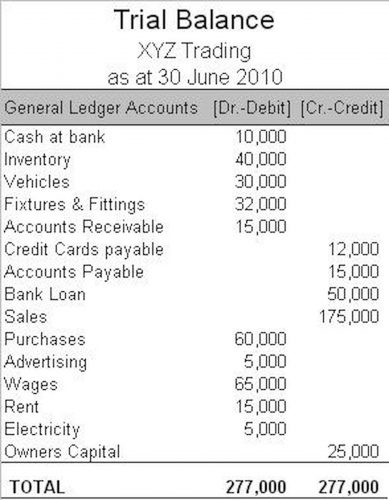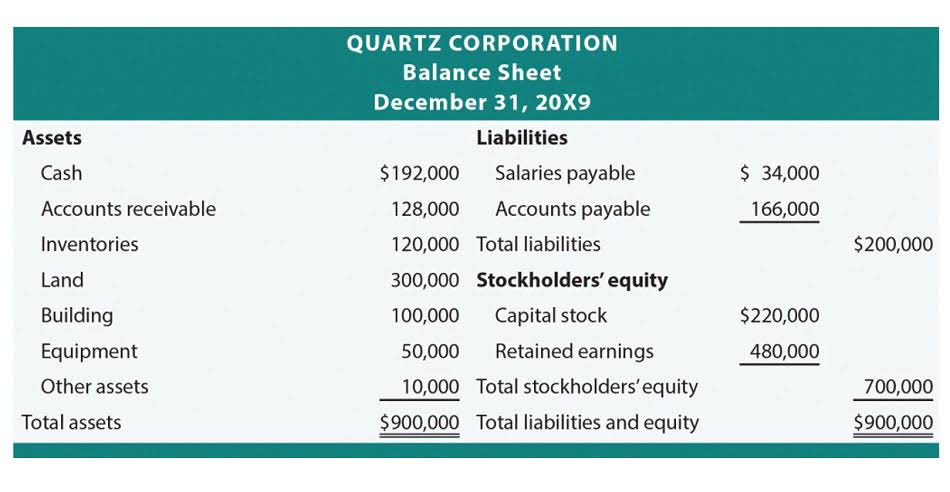The Ultimate Guide to Partnership Financial Statements: Simplifying Your Business Finances

In a distribution in liquidation of her entire interest, she receives properties A and B, neither of which is inventory or unrealized receivables. Property A has an adjusted basis to the partnership of $5,000 and an FMV of $40,000. Property B has an adjusted basis to the partnership of $10,000 and an FMV of $10,000.
Distribution of Profits and Losses
The Profit and Loss Appropriation Account is prepared after the standard profit and loss account. It allocates the net profit or loss to partners based on their agreed sharing ratios and accounts for other items like interest on capital and partner salaries. Current Accounts are used to track ongoing transactions between the partners and the firm, such as profits allocated, interest on capital, interest on drawings, and salaries paid to partners. This account helps separate long-term capital from short-term transactions. A partnership is a business run by two or more persons who agree to contribute assets to the business and share in the profits and losses.

More than partnership accounting

TAS can help you resolve problems that you haven’t been able to resolve with the IRS on your own. Always try to resolve your problem with the IRS first, but if you can’t, then come to TAS. You may be able use the Document Upload Tool to respond digitally to eligible IRS notices and letters by securely uploading required documents online through IRS.gov. Go to IRS.gov/Forms partnership accounting to view, download, or print all the forms, instructions, and publications you may need. Partner amended return filed as part of modification of the imputed underpayment during a BBA examination.
Calculation and Reporting of Recharacterization Amount by the Owner Taxpayer
- In case there is someone working for the company and not having a share of profits, he/she may be called an employee.
- Its straightforward nature allows partners to maintain clear visibility of their immediate financial standings.
- A partnership is a business arrangement in which two or more people own an entity, and personally share in its profits, losses, and risks.
- In a partnership, financial accounting involves not only tracking the firm’s overall income and expenses but also allocating profits and losses among the partners based on agreed terms.
- Individuals in partnerships may receive more favorable tax treatment than if they founded a corporation.
- In the following partnership accounting examples, if the partnership company records a profit, each partner’s allocation is determined through a debit from the income summary account and a credit to their capital account.
The partnership agreement outlines the roles, responsibilities, and profit-sharing arrangements among partners. This document serves not only as a legal framework but also provides guidelines for accounting practices, ensuring all partners remain informed about their financial rights and obligations. Clear delineation in the partnership agreement minimizes potential disputes and ambiguity in accounting matters. Understanding partnership accounting practices is essential for ensuring the efficient operation and equitable distribution of interests among partners in a legal context.
- A “qualified joint venture,” whose only members are spouses filing a joint return, can elect not to be treated as a partnership for federal tax purposes.
- For example, a foreign transferor would compare its outside ordinary gain to its aggregate deemed sale effectively connected ordinary gain, treating the former as effectively connected gain only to the extent it does not exceed the latter.
- Except for registering a business name, there are few government requirements specific to this type of partnership2.
- The double entry is completed with debit entries in the partners’ capital accounts.
- In certain jurisdictions, there may be an upper limit to the number of partners but, as that is a legal point, it is not part of the FA2 syllabus.
- In the absence of any agreement between partners, profits and losses must be shared equally regardless of the ratio of the partners’ investments.
Accountants help prepare accurate financial statements, ensuring compliance with accounting standards and regulations. Professional accountants assist with tax planning and compliance, helping the partnership minimize tax liabilities and avoid penalties. Accountants also provide valuable insights through financial analysis, helping partners make informed business decisions. Legal advisors help draft comprehensive partnership agreements that outline roles, responsibilities, profit-sharing ratios, and dispute resolution mechanisms. They ensure that the partnership complies with all relevant laws and regulations, reducing the risk of legal issues.

Compliance, Auditing, and Maintaining Transparency
- This method ensures that each partner’s share aligns directly with their investment, promoting fairness and transparency.
- According to the Partnership Act, it is not possible to have an agreement in case the partners carry out functions as charitable activities.
- Accurate bookkeeping for specific transactions in partnerships, such as the contribution and withdrawal of property, is crucial for maintaining the integrity of the financial records and ensuring compliance with tax regulations.
- However, the conversion may change some of the partners’ bases in their partnership interests if the partnership has recourse liabilities that become nonrecourse liabilities.
The conversion of a partnership into an LLC classified as a partnership for federal tax purposes doesn’t terminate the partnership. The conversion is not a sale, exchange, or liquidation of any partnership interest; the partnership’s tax year doesn’t close; and the LLC can continue to use the partnership’s taxpayer identification number (TIN). Each spouse should include their respective share of self-employment income on a separate Schedule SE (Form 1040), Self-Employment Tax. Although we can’t respond individually to each comment received, we do appreciate your feedback and will consider your comments and suggestions as we revise our tax forms, instructions, and publications. Don’t send tax questions, tax returns, or payments to the above address.
- The most common type of partner is a general partner, who actively manages and exercises control over the business operations.
- A partnership distribution is not taken into account in determining the partner’s distributive share of partnership income or loss.
- He allocates the entire $10,000 to property D (its unrealized depreciation).
- As a result, the above entry Income Summary, which is a temporary equity closing account used for year-end, is reduced by $500, and the capital account is increased by the same amount.
- This leaves a $40,000 basis increase (the $55,000 allocable basis minus the $15,000 total of the assigned bases).
- A partnership is generally treated as an investment company if over 80% of the value of its assets is held for investment and consists of certain readily marketable items.
- All kind of allowances, like salary allowances and capital allowances, are treated as withdrawals.
In an asset withdrawal, the partnership accountant debits the capital account and credits the account that is most closely related to the asset in question. In addition to that, when a partner makes cash withdrawal, the partnership accountant debits their capital account and credits the partner’s cash account. Handling complex transactions in partnerships requires meticulous attention to detail and a robust understanding of accounting principles. These transactions can include various types of contributions and withdrawals, which can be challenging to manage. In this blog, we will delve deeper into each of Outsource Invoicing these topics, providing practical insights and tips for effective partnership accounting. Whether you’re a seasoned partner or new to the concept, this guide will help you understand the nuances of financial statement reporting for partnerships.

Partnership: Definition, How It Works, Taxation, and Types
This ease contrasts with potentially costly disputes that may arise between partners if they cannot resolve them amicably. Partnerships are often best for a group of professionals in the same line of work where each partner has an active role in running the business. These often include medical professionals, CARES Act lawyers, accountants, consultants, finance & investing, and architects. The basic varieties of partnerships can be found throughout common law jurisdictions, such as the United States, the U.K., and the Commonwealth nations.

